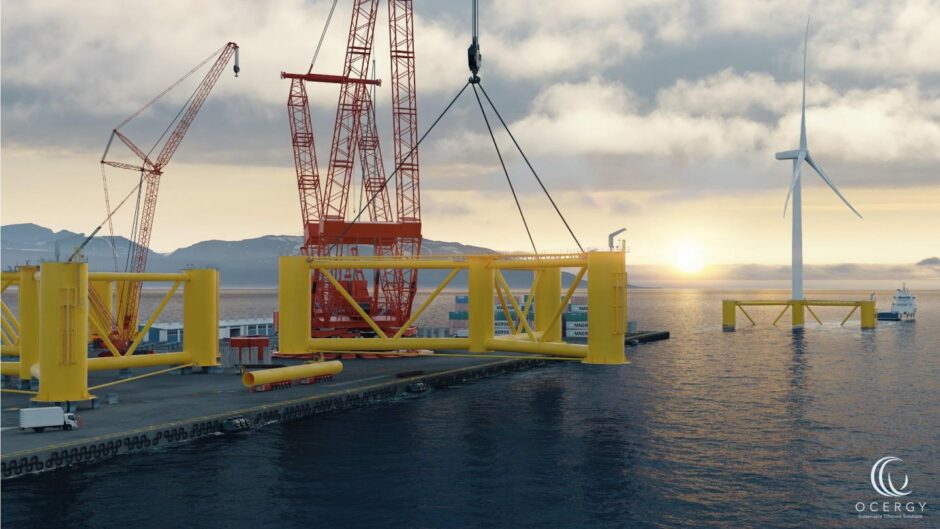
US-headquartered Ocergy has been awarded a pre-FEED (front-end engineering design) deal for the foundations for the Salamander floating wind farm off Aberdeenshire.
Salamander is a smaller-scale 100 megawatt project, planned for 20 miles off Peterhead, which is aimed at helping reduce the cost in floating wind farms to make them competitive.
Ocergy, a specialist with offices in the US and France, has been awarded pre-FEED for its OCG-Wind semisubmersible platform foundation technology, of which Salamander is expected to have six or seven.
Scottish focus
OCG’s hull is made up of three outside circular columns connected mechanically with trusses to a central column that supports the wind turbine.
The Salmander joint venture – Orsted, Simply Blue Group and Subsea 7 – said they have “selected a foundation that can be built in Scotland and that is our base case for delivery”.
They added, however, that the supply chain “needs to react to the opportunity” with support from all agencies involved.
Last year the JV signed a memorandum of understanding with Inverness-headquartered Global Energy Group to collaborate on the design, development and execution of the wind farm.
Dominique Roddier, Ocergy’s CEO said: “The Salamander project is of paramount importance for our consortium and the floating offshore wind industry. This project will demonstrate that the premise of delivering one unit per week, week after week is achievable. This is the last major industry hurdle before the deployment of large, commercial-scale, floating wind projects.”
Development
Salamander is being progressed through Crown Estate Scotland’s INTOG (Innovation and Targeted Oil and Gas) leasing round, with the aim of giving the Scottish supply chain an early opportunity to work on floating wind ahead of larger ScotWind projects at gigawatt-scale coming through.
Awards for INTOG are expected in Q1 of next year, with Salamander hoping for progression via the smaller-scale “innovation” pot of awards.
Project director Huw Bell said: “From inception, the foundation manufacturing and assembly was a crucial element for us in delivering higher local content. We’re focusing on the capabilities of the Scottish supply chain, which is helping us in deciding which technologies to advance. Ocergy’s OCG-Wind technology meets our requirements.
“We aim to provide access to double the number of Scottish port facilities over some traditional floating concepts due to lower draft requirements. We also expect a scalable fabrication and assembly process, suitable for commercial scale deployment as well as decreasing fabricated steel mass by around a third, which will reduce the cost of energy whilst also providing potential for local fabrication.”

